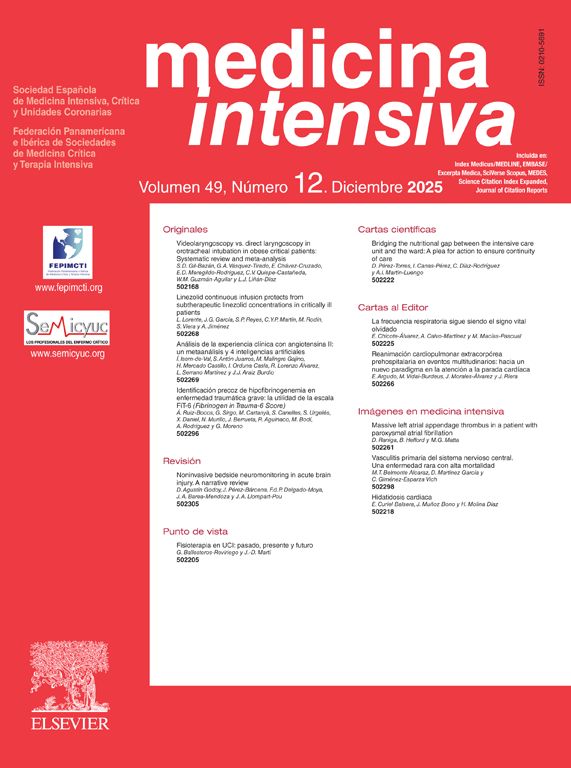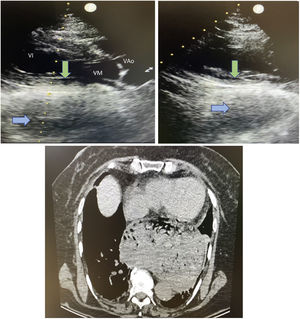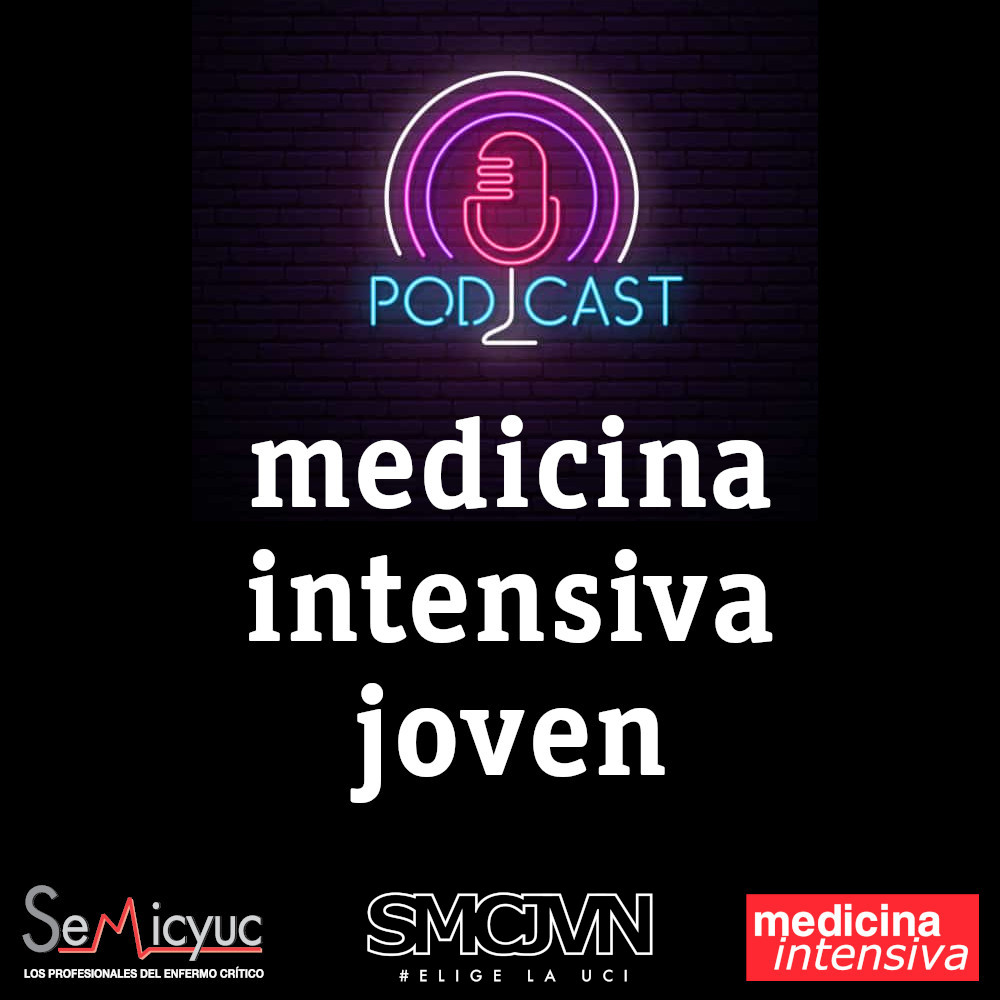This is the case of a 78-year-old woman with a 2-h history of intense oppressive chest pain associated with sweating and poor general condition. The examination of the patient’s heartbeats reveals a visible and overt vibration at thoracic wall level. The bedside echocardiography performed in the parasternal view—both in the long (figure 1) and short axes (figure 2)—revealed the presence of extrinsic compression of the heart by a fluid-and-air-filled heart chamber (in blue color) that caused the protrusion of the heart lower side (in green color). The CCTA performed discards the presence of acute aortic disease but confirms the presence of massive hiatal hernia with complete herniation of the gastric chamber (figure 3) (Fig. 1).
El factor de impacto mide la media del número de citaciones recibidas en un año por trabajos publicados en la publicación durante los dos años anteriores.
© Clarivate Analytics, Journal Citation Reports 2025
SJR es una prestigiosa métrica basada en la idea de que todas las citaciones no son iguales. SJR usa un algoritmo similar al page rank de Google; es una medida cuantitativa y cualitativa al impacto de una publicación.
Ver másSNIP permite comparar el impacto de revistas de diferentes campos temáticos, corrigiendo las diferencias en la probabilidad de ser citado que existe entre revistas de distintas materias.
Ver más





